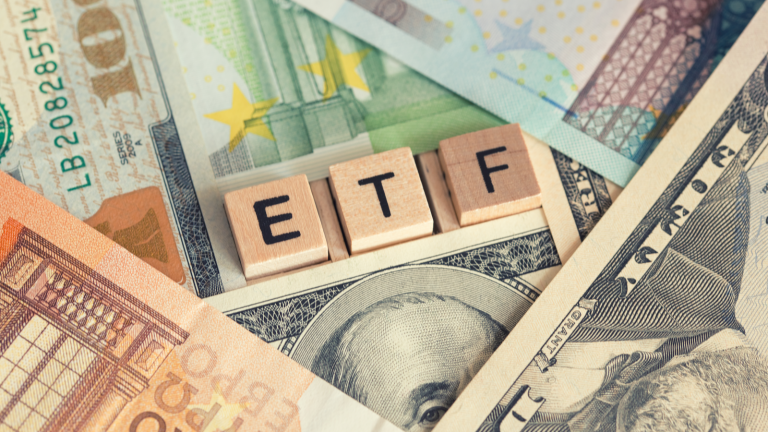Covered-call ETFs are increasingly popular in today’s market climate as they allow investors to leverage market volatility while generating income that beats even high-yield savings accounts. Covered calls are an options strategy where the investor holds shares of a stock or ETF like the SPDR S&P 500 ETF (NYSEARCA:SPY) and sells calls against their shares. Covered calls are a popular strategy for options traders but have critical limitations for many retail investors.
First, you’ll need to have at least 100 shares of stock to sell calls against the asset. That can be pricey since 100 shares of SPY alone will set you back at least $42,000 today. Second, covered calls come with the risk of assignment. That means you’re forced to sell the shares if the option expires “in the money.” Buying and selling shares to support a covered call strategy can be time-consuming and have unexpected tax implications. That’s where covered-call ETFs shine.
Investors flooded one popular covered-call ETF with over $10 billion this year alone, underlining another important point. While long-term wisdom dictates a “buy and hold” index investing strategy, covered-call ETFs have key advantages over that strategy in today’s market.
Covered-Call ETFs Cut Volatility

Today’s most popular covered-call ETF, the JPMorgan Equity Premium Income ETF (NYSEARCA:JEPI), is surprisingly stable compared to indices today. JEPI holds shares of S&P 500 stocks and sells “out of the money” covered calls against the assets to generate income. While investors’ focus is typically on income opportunities, reduced volatility is a hidden benefit.
In 2022, when stocks tumbled worse than we’ve seen in past weeks, the S&P 500 lost a collective 18%. JEPI’s share price only dipped 3.5%. In this sense, JEPI served as a proxy for the index itself with lessened volatility. The covered-call ETF shielded investors’ portfolios from the worst of market turbulence.
Covered-Call ETFs Generate Income

Of course, income opportunity is the most popular benefit of covered-call ETFs. Growth indices like the S&P 500 or NASDAQ 100 don’t typically generate high dividend returns. SPY, for example, yielded just 1.52% over the past twelve months. On the other hand, a covered-call ETF like the Global X NASDAQ 100 Covered Call ETF (NASDAQ:QYLD) yielded a whopping 12.14% over the same period.
QYLD’s prospectus tells investors it intends to “produce higher yields in times of volatility.” Likewise JEPI’s twelve-month yield stands at a respectable 11.04%, especially considering QYLD’s higher expense ratio at 0.60%, or $60 annually on a $10,000 investment. The best part of high dividend yields is that they’re distributed monthly, ensuring a consistent cash flow. At the same time, most covered-call ETFs’ pricing is well below their index investment ETF peers. QYLD, for example, costs just just $17 per share. For the same price as 100 shares of SPY, you can buy almost 2,500 shares of QYLD. Run the numbers on the distribution, and you’re entitled to $0.172 per share – more than $400 monthly! Combine a hefty yield that beats boring bond laddering with reduced volatility, and covered-call ETFs are ideal in light of ongoing bearish sentiment.
Covered-Call ETFs Help Offset Losses

This benefit to covered-call ETFs closely mirrors its reduced volatility opportunity, with a key caveat. Covered-call ETFs are less volatile as a standalone investment. At the same time, they can also help offset losses if you hold the underlying index.
Like QYLD, the JPMorgan Nasdaq Equity Premium Income ETF (NASDAQ:JEPQ) is a covered-call ETF selling options against the NASDAQ 100 with an expense ratio of 0.35%, or $35 annually on a $10,000 investment. As Morningstar’s analysis states, this covered-call ETF “provides attractive income by forgoing the upside of its growth-heavy index.” While this may seem a drawback, consider what would happen if you held JEPQ alongside a NASDAQ 100 ETF like the Invesco QQQ Trust (NASDAQ:QQQ).
Over the past 3 months, QQQ dropped nearly 7%. Over the same period, JEPQ’s share price remained slightly more stable due to reduced volatility, falling only 4.75%. But, with the dividend distributions included, the covered-call ETF fell only 2%. If you hold QQQ but can’t afford enough shares to execute your own covered-call strategy, holding JEPQ alongside it would balance your losses considerably.
The best part? Since JEPQ distributes dividends on a monthly basis, you can easily use that cash flow to buy more shares of QQQ, creating a feedback loop and self-supporting dollar-cost averaging strategy. This positions you for an eventual market rebound, as you can plunge more cash into a beaten-down index rather than letting inflation eat your cash away!
On the date of publication, Jeremy Flint held no positions in the securities mentioned. The opinions expressed in this article are those of the writer, subject to the InvestorPlace.com Publishing Guidelines.
